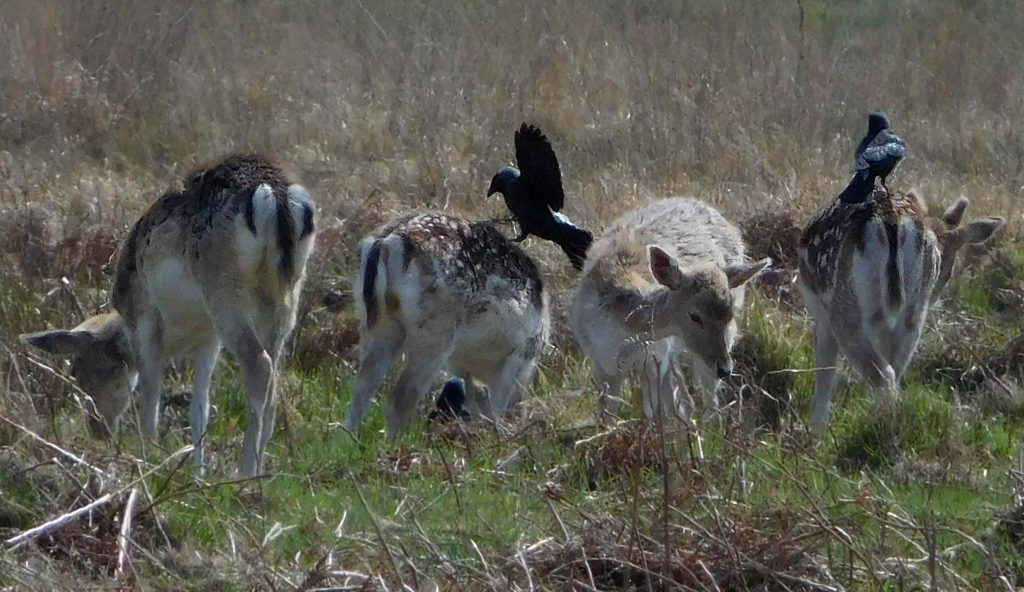
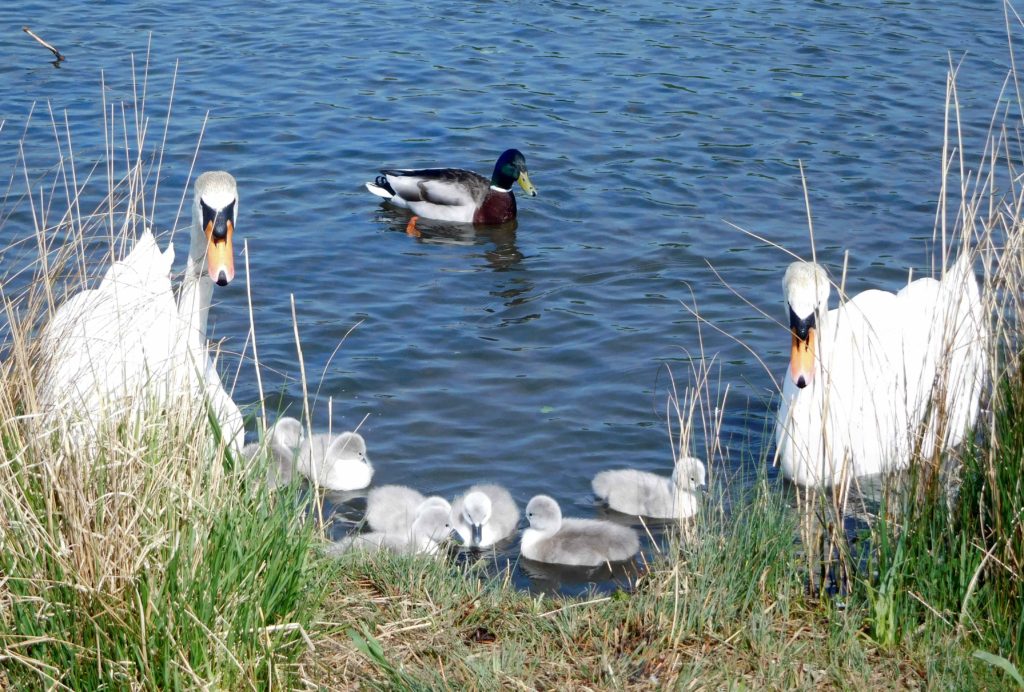
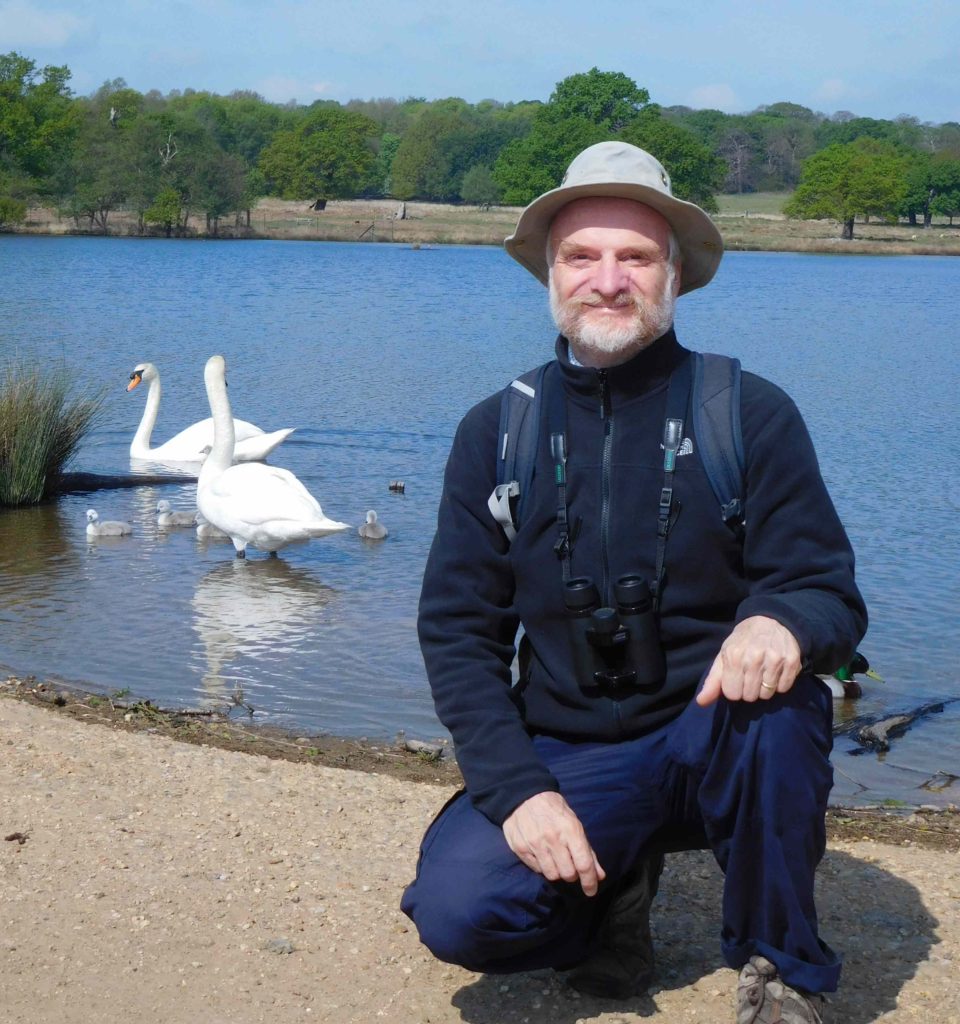





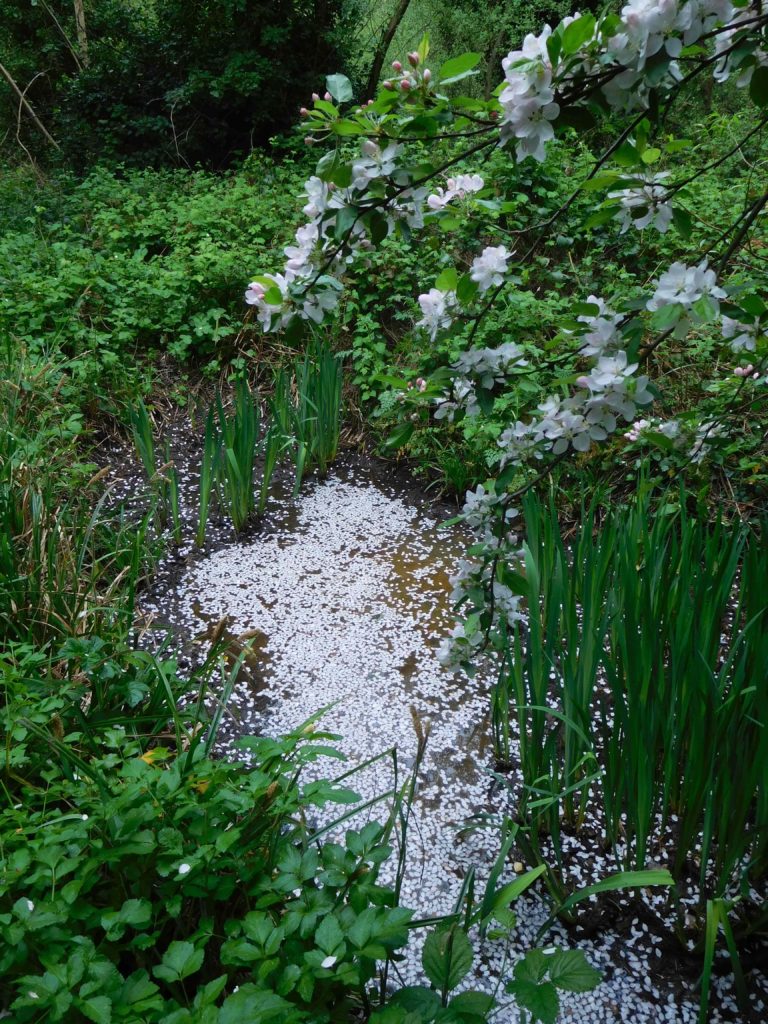
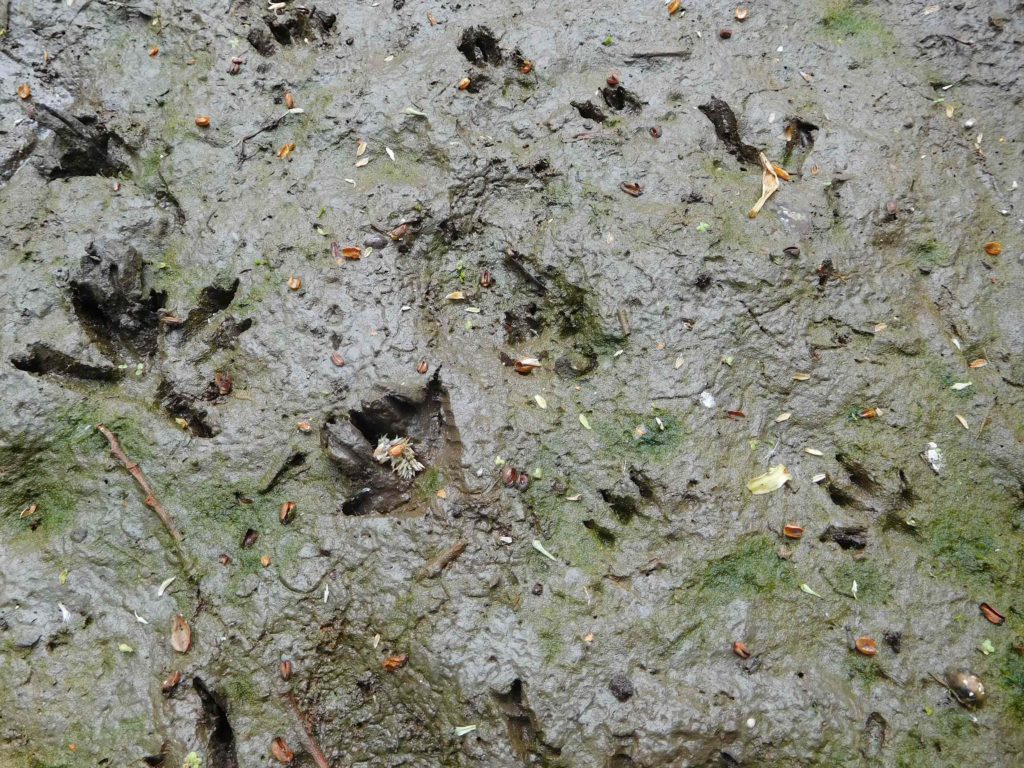
I’d hardly stepped onto the path before a pair of Peacock butterflies spiralled up in a territorial dispute – the little meadow was evidently prime habitat, and the males were fully charged up on this beautiful spring day.
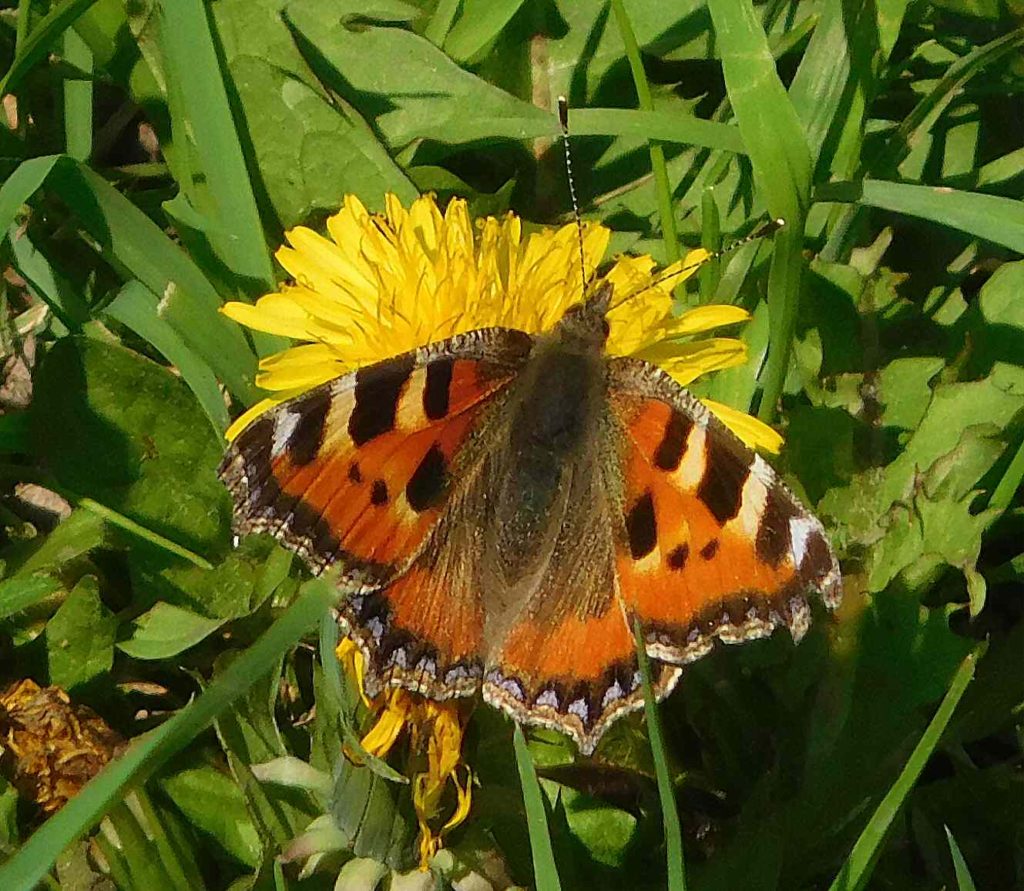
A bit further along, a Small Tortoiseshell was visiting some of the many Dandelions by the path. It’s certainly my first this year; and I can’t recall seeing one here at Wraysbury before. It was once a common butterfly but nowadays unkempt beds of Nettles are rare enough, and like all our showier butterflies, they’ve suffered from the changes to the countryside, including insecticide sprays.
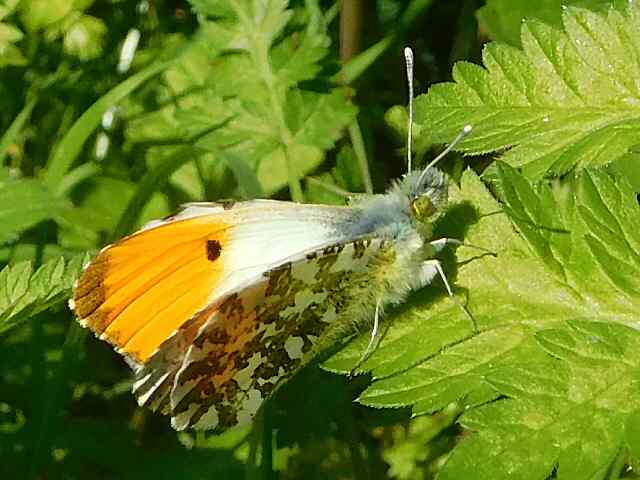
The next delight was the first Orange-Tip of the year. It’s a “White” butterfly but with beautiful coloration above and below: the underwing is remarkably well camouflaged.
In a woodland glade, two Commas tussled for the best display position.
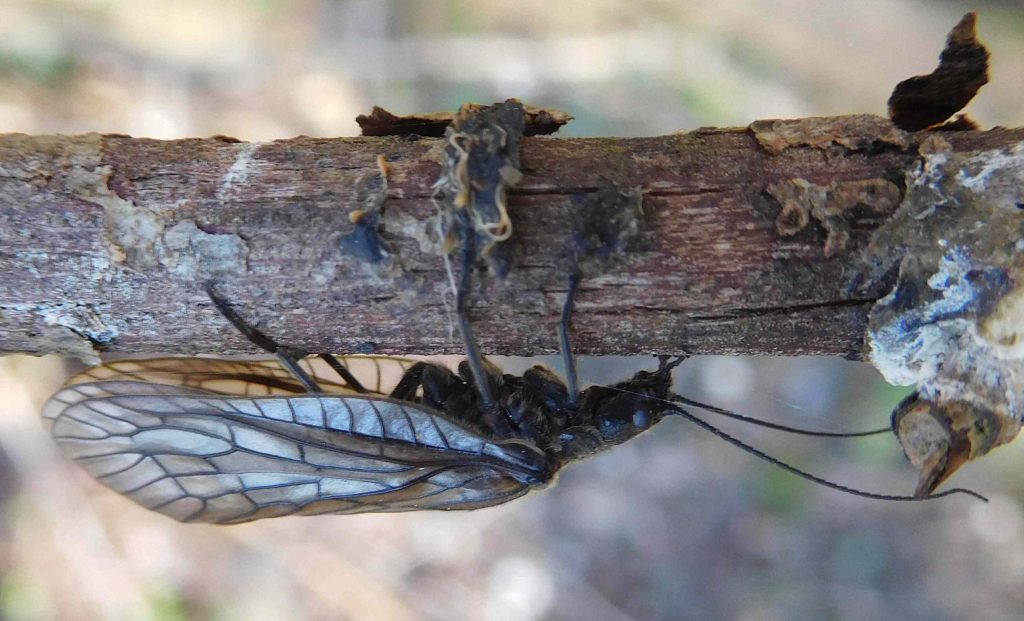
And near one of the lakes, an Alder-Fly clambered along a twig. The larvae are aquatic; on a good day in early summer, the air can be full of adult Alder-Flies.
Birdsong was pretty much continuous, with Blackcaps, Chiffchaffs, Great Tits, Song Thrushes, Blackbirds, Green Woodpeckers, a Cetti’s Warbler and I think a Sedge Warbler too all contributing their songs. A Heron gave a harsh croak and some ungainly squawks. A Parakeet shrieked overhead. A Kestrel hunted silently. Spring has sprung in Wraysbury.

Several “firsts of the year” today: a Blackcap sang in the reserve; the first Speckled Wood butterfly, closely followed by a pair of males fighting in a clearing; the first Comma on the Picnic Meadow; and these splendid Bee-Flies with their handsomely pictured wings, demonstrating that they may be short, round, and furry, but they can fly while coupled tail-to-tail, not as elegantly as a wheel of Dragonflies maybe, but unquestionably able to get airborne, one of the two flying (of course) backwards.
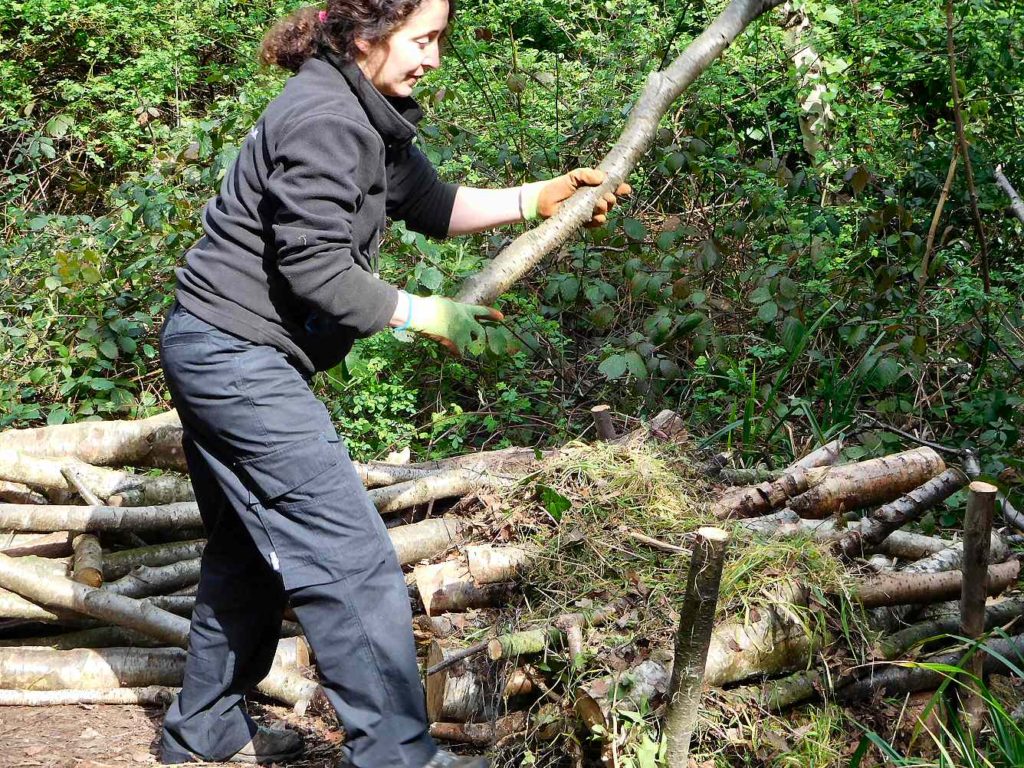
After building a habitat woodpile, we spent the day scything the meadow and raking up the clippings to deplete the mineral status little by little. It seems to be working nicely, as the range of insects and flowers is plainly increasing. Netty found some Vetch and Mouse-Ear; and there are attractive Red-Tailed Bumblebees to join the Buff-Tails and White-Tails that are emerging from their winter lairs.
The air was full of birdsong from Chiffchaffs, Blackbirds, Great Tits, Blue Tits, Goldfinches, Robins, Dunnocks and the newly-arrived Blackcap. A Sparrowhawk circled overhead. The cherries are all in flower. Spring has sprung.
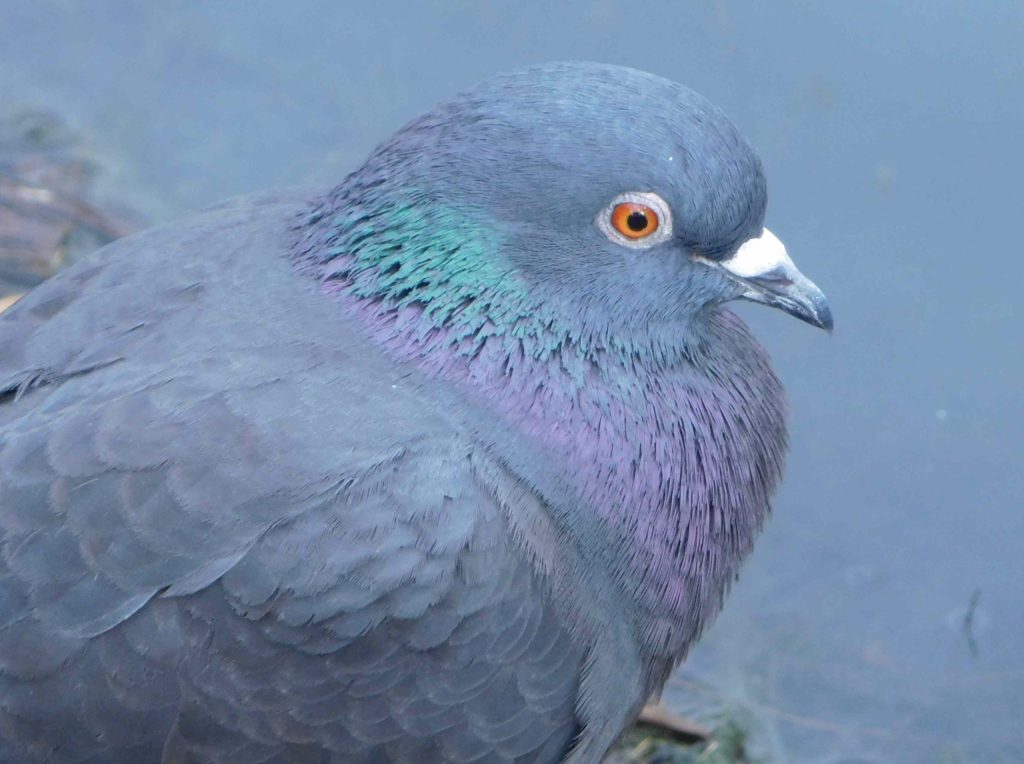
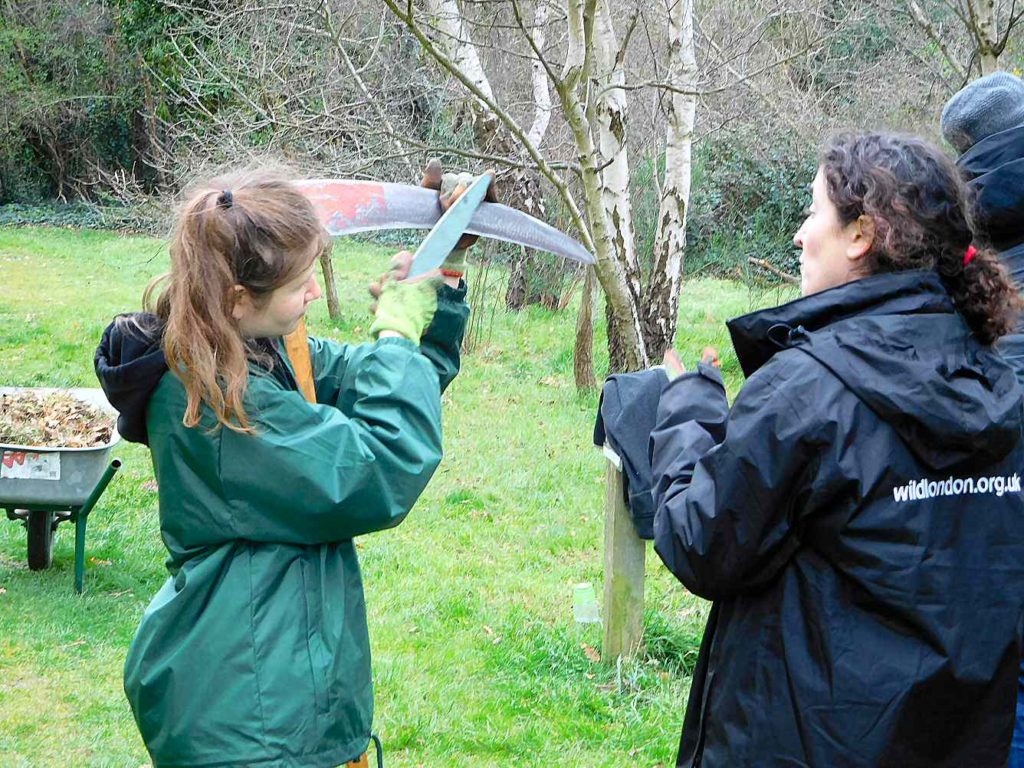
The first day of spring, and a Chiffchaff was singing down in the reserve. The hawthorn hedge, laid last year, is springing up into fresh green and thickening up nicely.
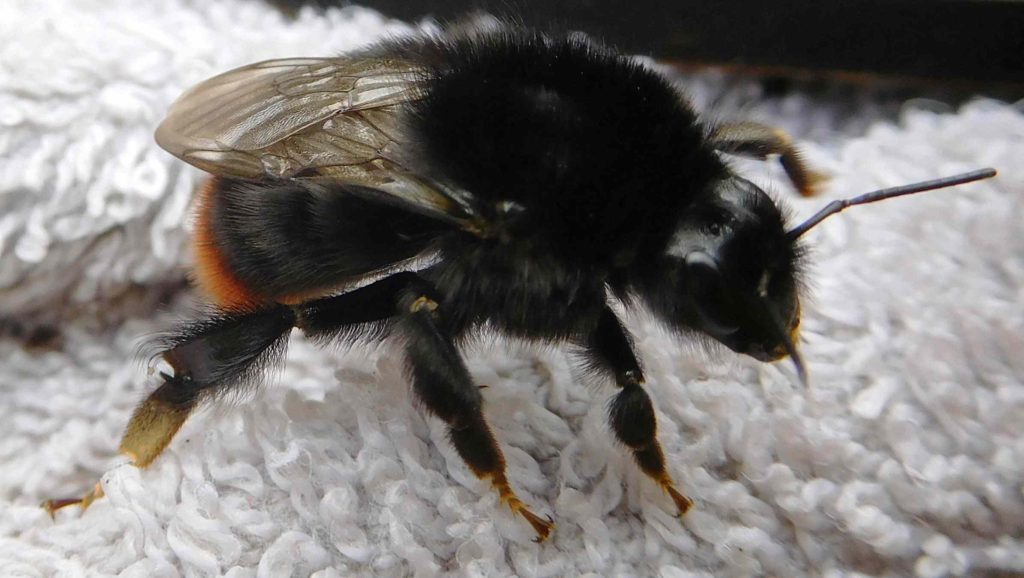
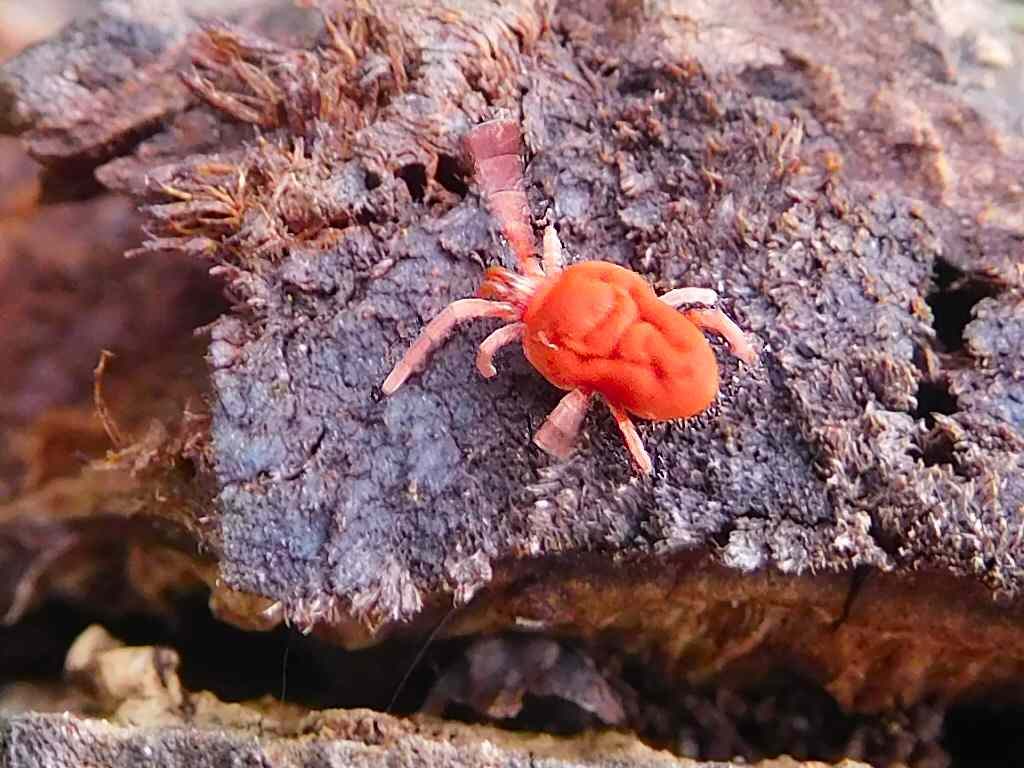
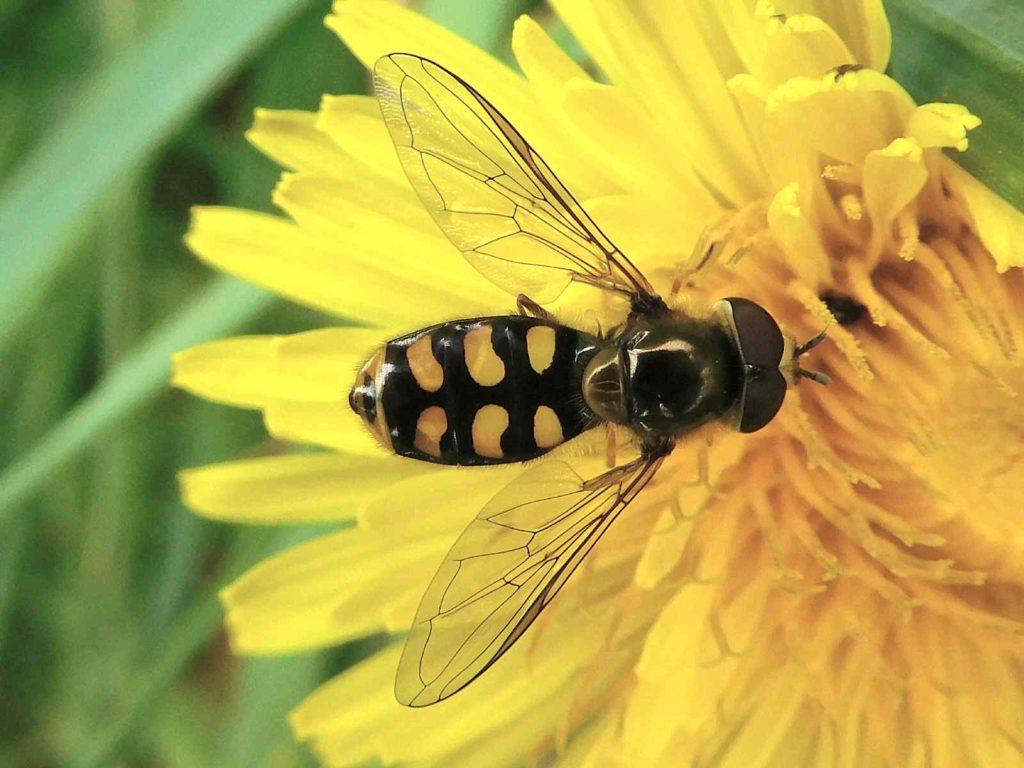
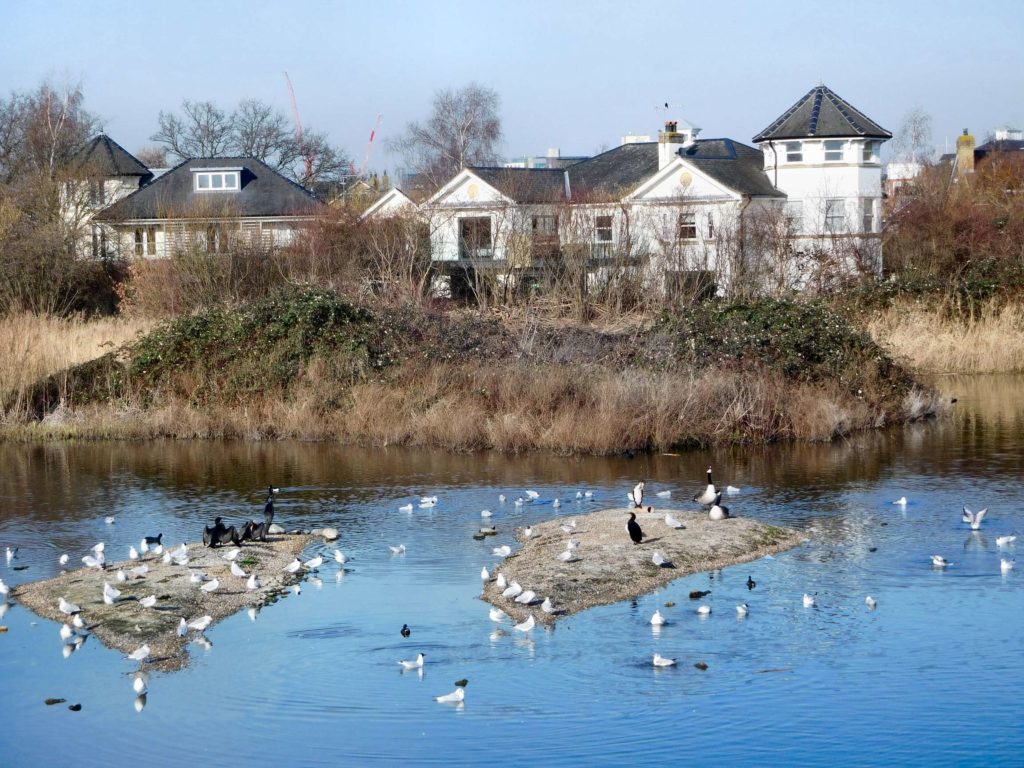
The WWT’s London Wetland Centre of course brings nature close, from faraway reedmarshes to a corner of our great city. But today I want to look at some features which go much further, bringing nature within touching distance, even if the observer is in a buggy or wheelchair.
The Wetland Centre achieves this with a whole lot of ideas, implemented in robust and attractive materials. One is the accessible pond, in the Thames Water Pond Zone. Here, there are raised ponds (about knee height) surrounded by asphalt, so a group can get up close. The sides are made of railway sleeper-sized chunks of wood, arranged for convenient sitting, and there are built-in interpretation signs with well-drawn pictures of common pond animals. Pond-dipping is allowed under supervision.
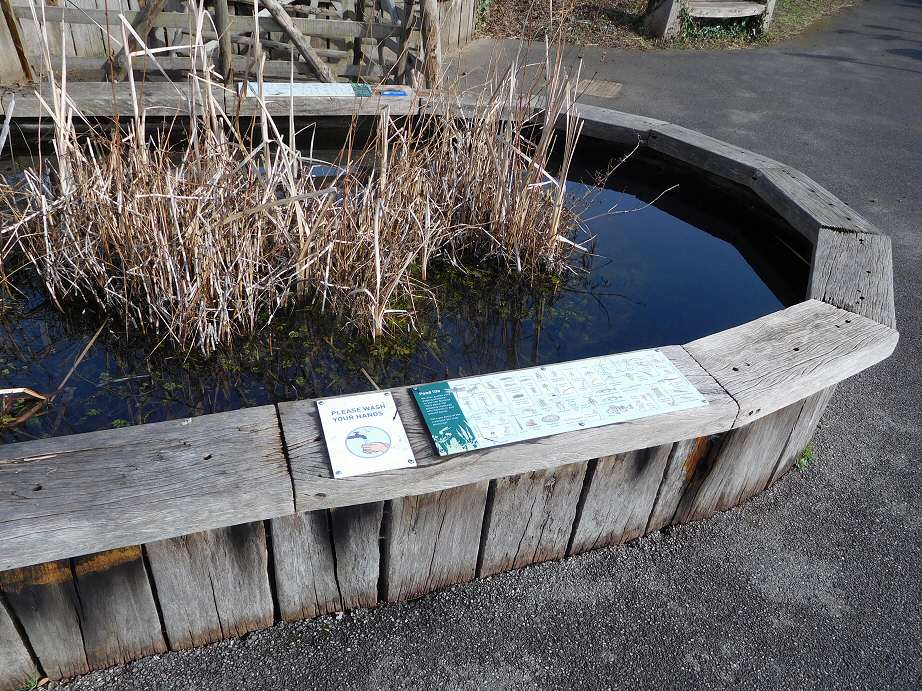
The Pond Zone actually has a different kind of accessible pond, more like an aquarium: a robust concrete tank, with an impressive front wall of 50mm thick bullet glass. This is presumably intended to let visitors get really close to (well, 50 mm away from) the pondlife, but not to touch. Ingenious, but it doesn’t feel as natural as the railway-sleeper pond, for my money.
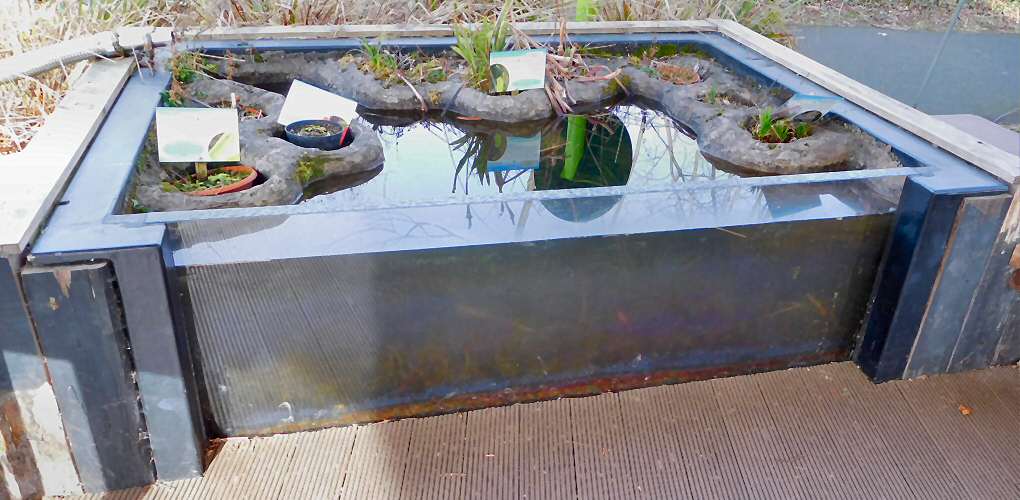
Accessibility goes for plants as well. Here’s the Herb Garden, next to the beautiful thatched reedbed museum, again with chunky wood to sit down on. Very cosy.
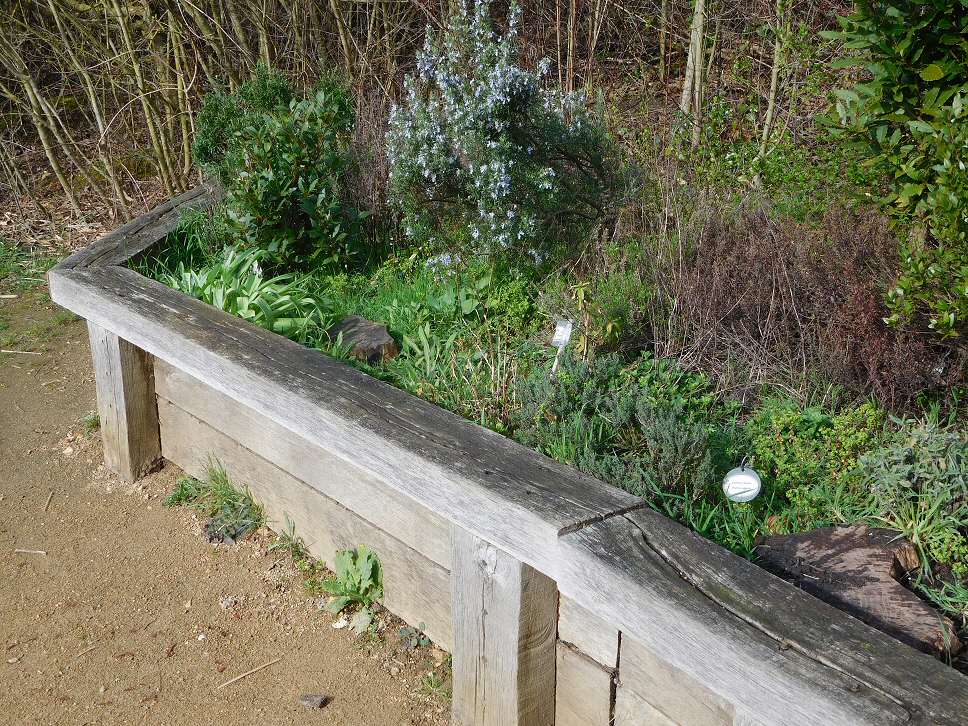
Ok, so that’s ponds and herbs. How about Accessible Bees? The towering bee homes (there are several of them) are certainly talking points.
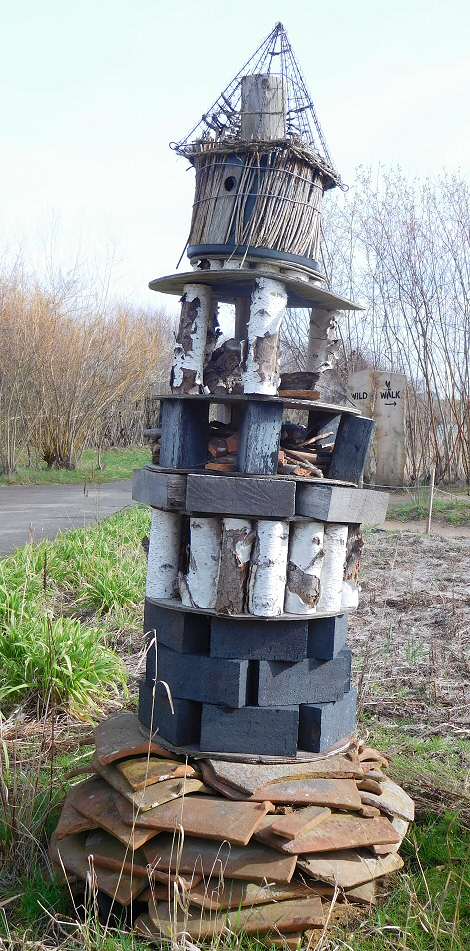
The spacious Rain Garden has some nice touches, like an array of large boulders sporting mosses and lichens.
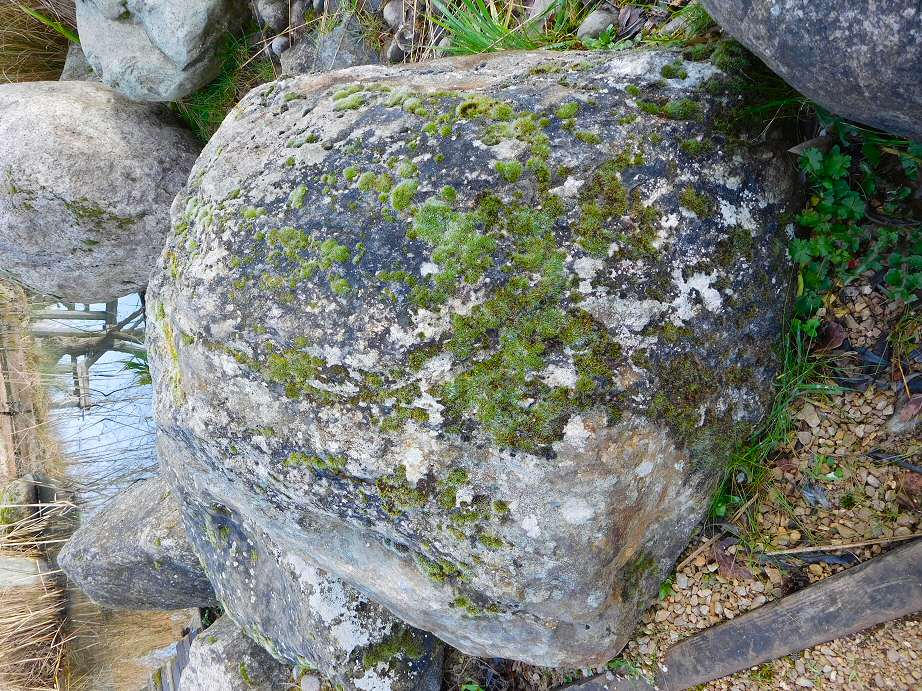
Nearby is a very pretty loggery. The fungi are certainly flourishing.
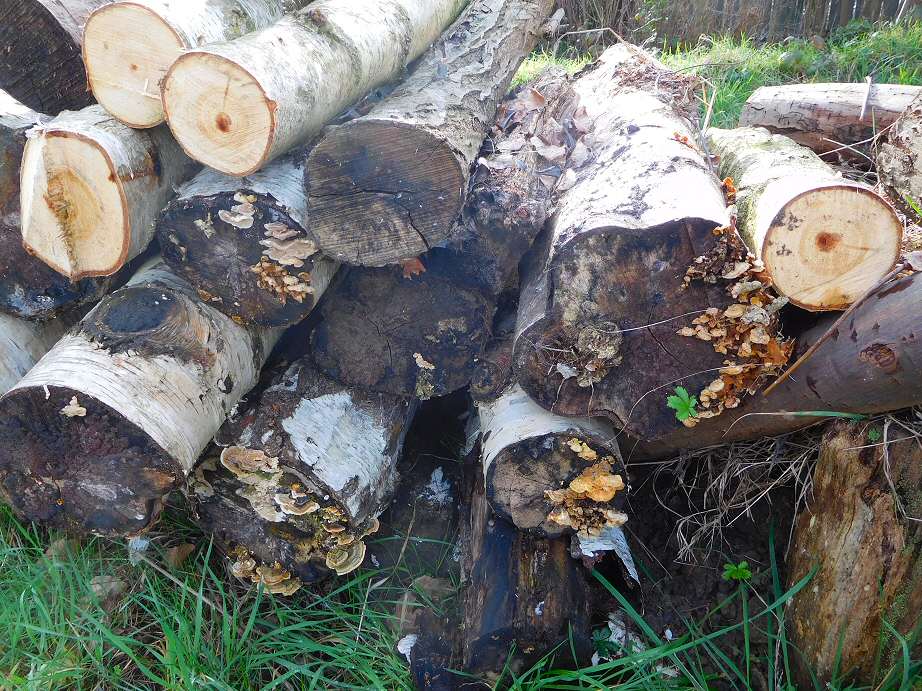
The planting beside the main building puts a giant flowering Rosemary bush against the brickwork, to stylish effect.
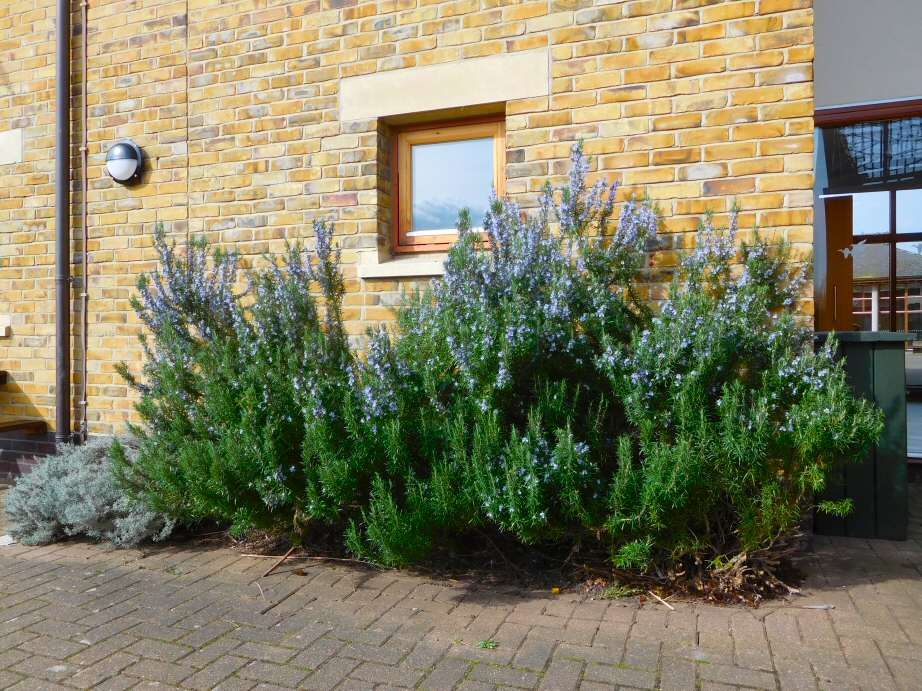
Some of the hides have low ‘green’ rooves. This one is covered in masses of the bushy lichen Cladonia ramulosa with attractive chocolatey apothecia (fruiting bodies). Some red Stonecrop lurks in the background (you can’t have everything). It’s definitely “nature up close”.
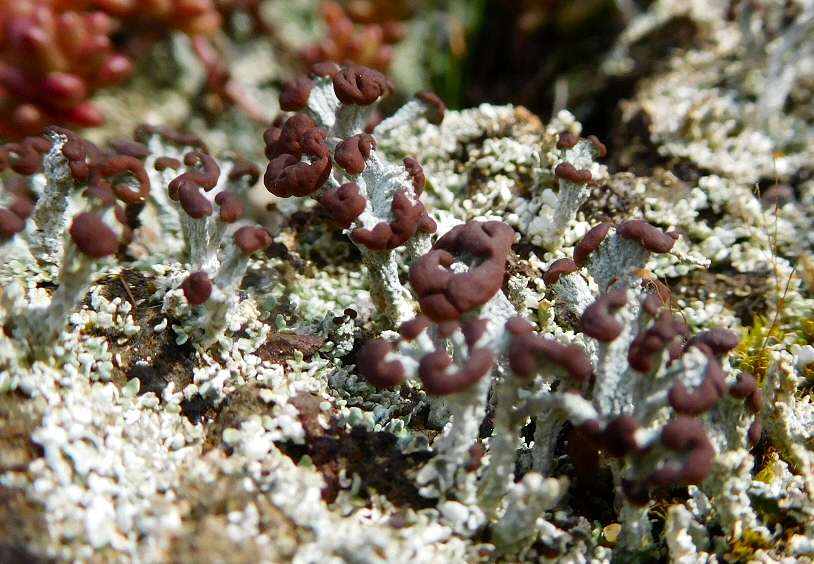
South-West London today reached 20.1 Celsius, a record for England in February. I remember February on a school football pitch – icy wind, horizontal drizzle, slimy mud, frozen knees, goosebumps, the whole winter thing. Actually I remember public school as being nearly always cold, and nearly always hungry, but I digress. Global warming feels absolutely real and present when there’s a winter’s day as warm as, well, an English Summer.

The result is visibly paradoxical – trees still bare, osiers as orange winter twigs, winter ducks like the Goldeneye still about in good numbers – but the sky blue, the air balmy, and the birds definitely singing.
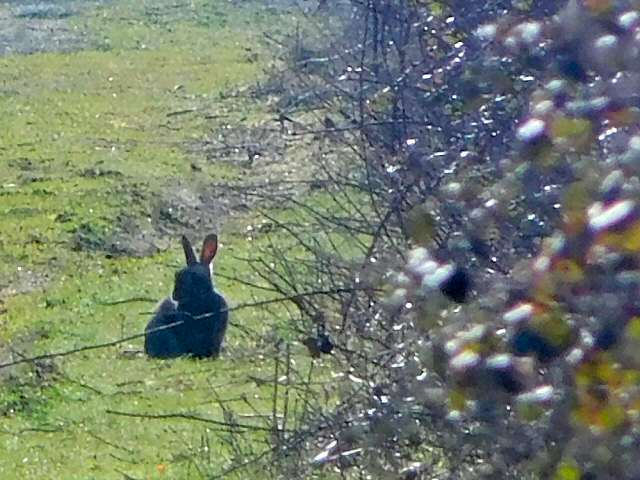
Other than that, I saw and heard Greater Spotted and Green Woodpeckers; a resident Chiffchaff hopped about a bush; a Cetti’s Warbler whirred like an oversized Wren from the lakeside vegetation below my feet; Cormorants lazed about in the trees; a Heron fished in the river, flapping slowly and improbably away in the narrow space between the willows, rising like some stick-and-string kite to surmount the treetops.
P.S. One day later, the winter temperature record for Britain was broken again, this time 21.6 Celsius right here in the west of London, as measured at Kew Gardens. It’s of course the pleasantest side of global warming, ignoring the increased hurricanes, winter storms, droughts, scorched crops, spreading deserts, famines across the Sahel, and all the rest. Ashdown Forest (home of Pooh Bear, Piglet, Tigger and Kanga) had two major fires today, so it hasn’t been jolly all round.

Well I don’t seem to have made it to the Wetland Centre for ages, but this gloriously sunny day was irresistible. It was an astonishingly quiet cycle ride along the river and through the backstreets, away from the grinding traffic.
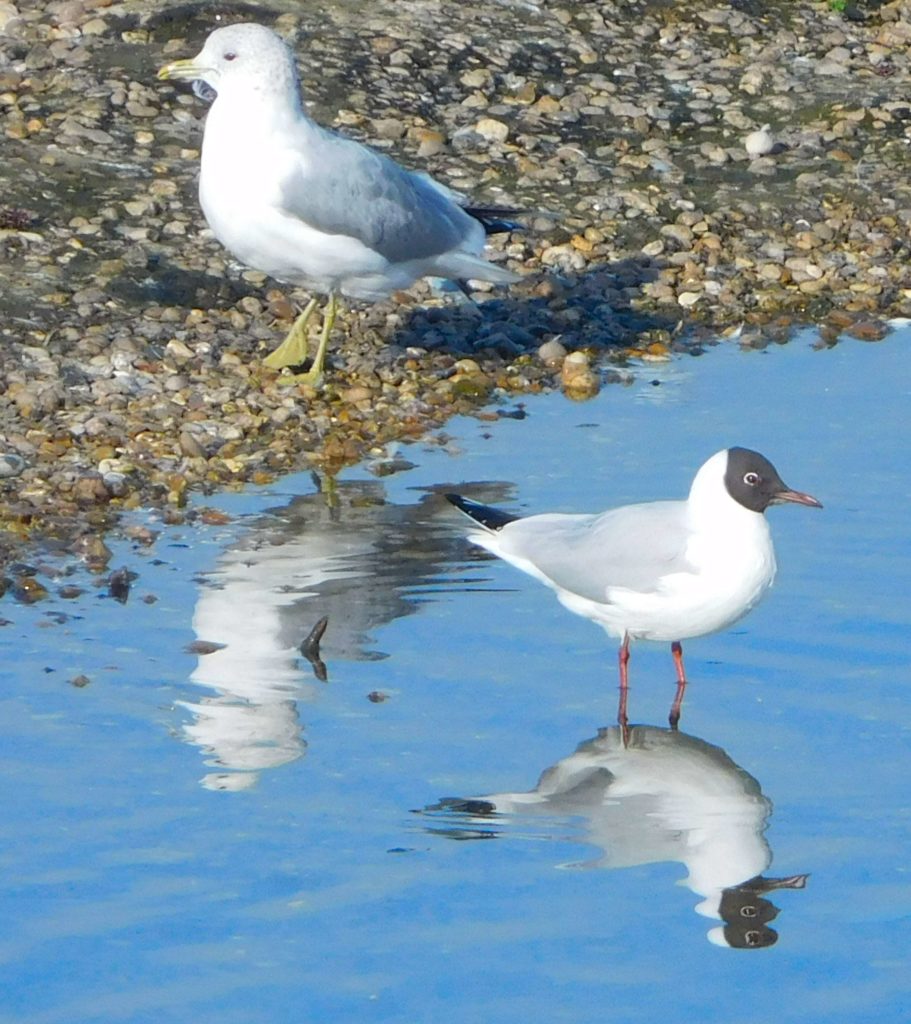
The centre was even quieter, as far as engine noise was concerned; from the hides over the Main Lake, birdsong, or rather the sharp calls of ducks and gulls, was all I could hear. The paths and play areas were heaving with families on Half-Term, young fathers looking unexpectedly burdened with excited and active toddlers.
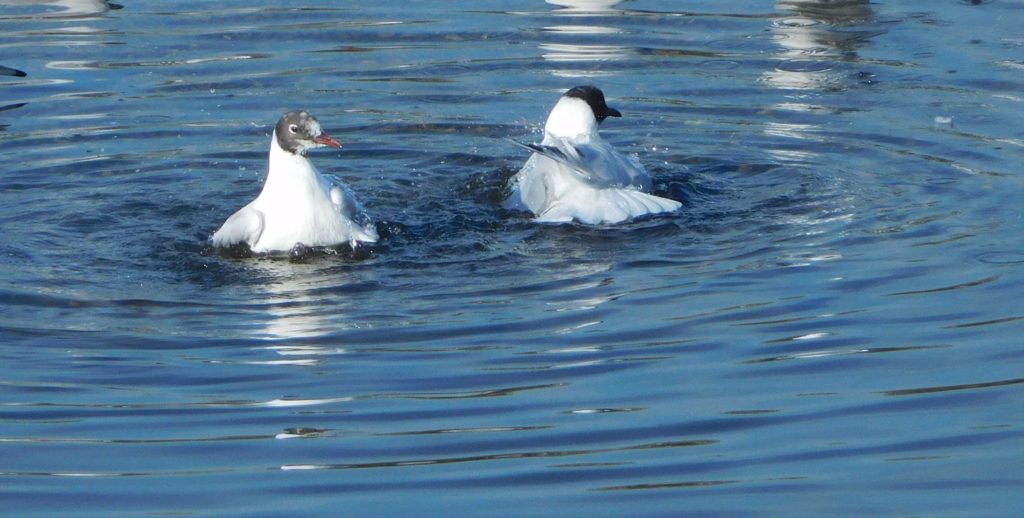
The birds, marvellously undisturbed, got on with their normal behaviour: I watched dominant/submissive social interactions, and of course preening and bathing in the calm shallow water.
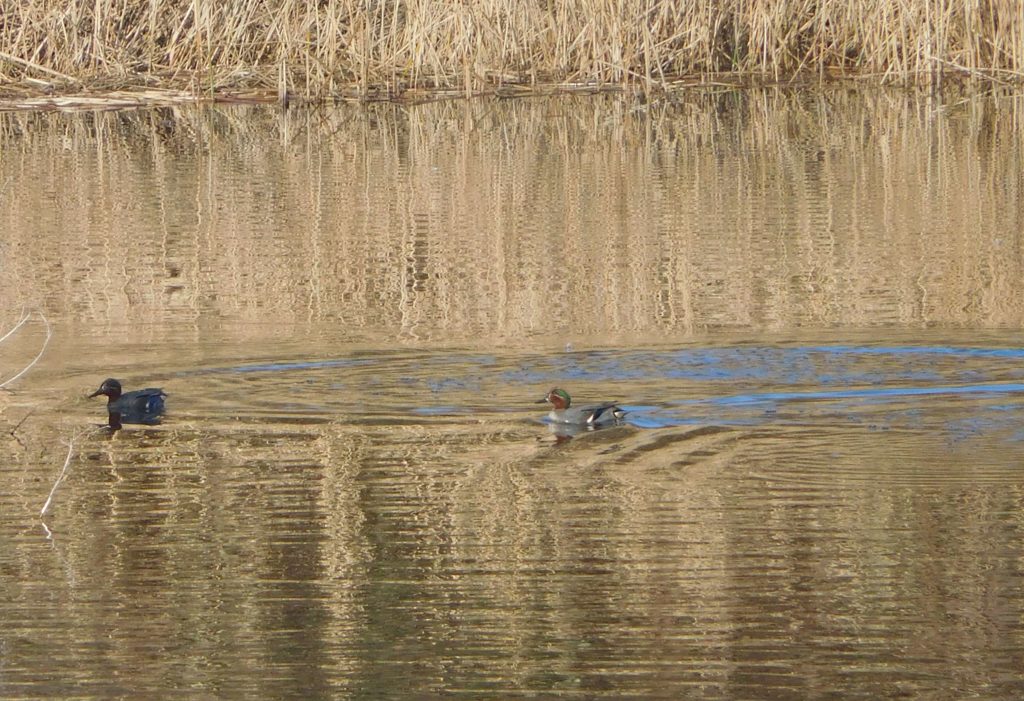
The different gulls showed off a rich variety of breeding and immature plumages, of which each species has many. At this time of year, the species look maximally different, as they signal their fitness to potential partners.

Ducks seen included Pintail, Teal, Mallard, Tufted, Shoveler, Wigeon, Pochard, and Gadwall. A mob of Lapwings, perhaps a hundred strong, got up from the islands from time to time, accompanied by Starlings that seem to be convinced they are waders and waterbirds. Cetti’s Warblers called loudly from all over. Long-Tailed Tits whirred about between the willows. Greenfinches wheezed their extraordinary but hardly tuneful spring song and massed on the bird-feeders; Chaffinches hopped about on the ground beneath them, hoovering up the crumbs. Children jumped up and down in the Splashometer puddles and on the deliberately wobbly rope suspension bridge cunningly set at water-level. Mothers wondered how to dry out their shoes. Grandads licked ice cream cones. I saw 32 species of bird, and enjoyed the Common Orange Lichen on the slate roof of the Wildside hide.
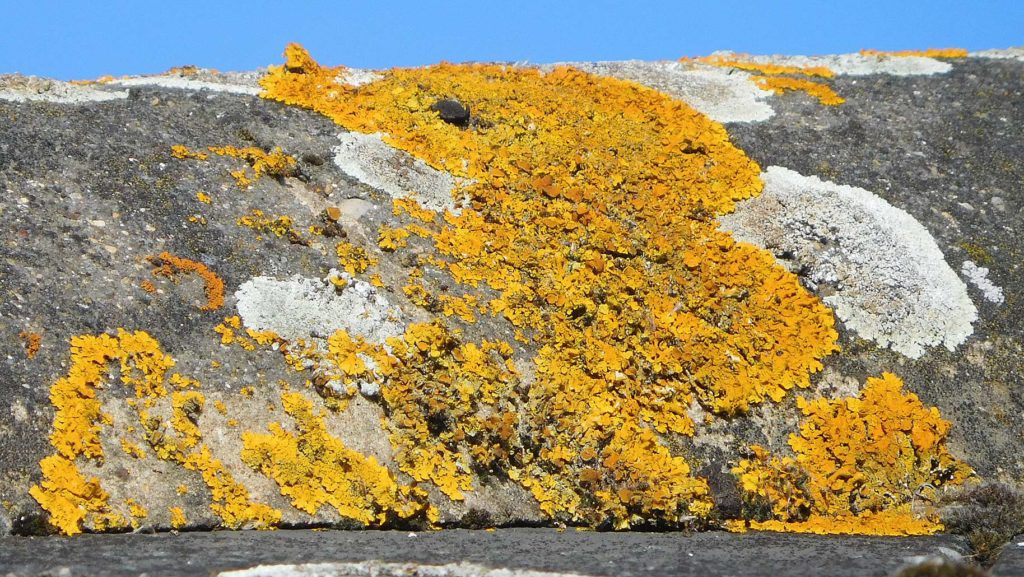
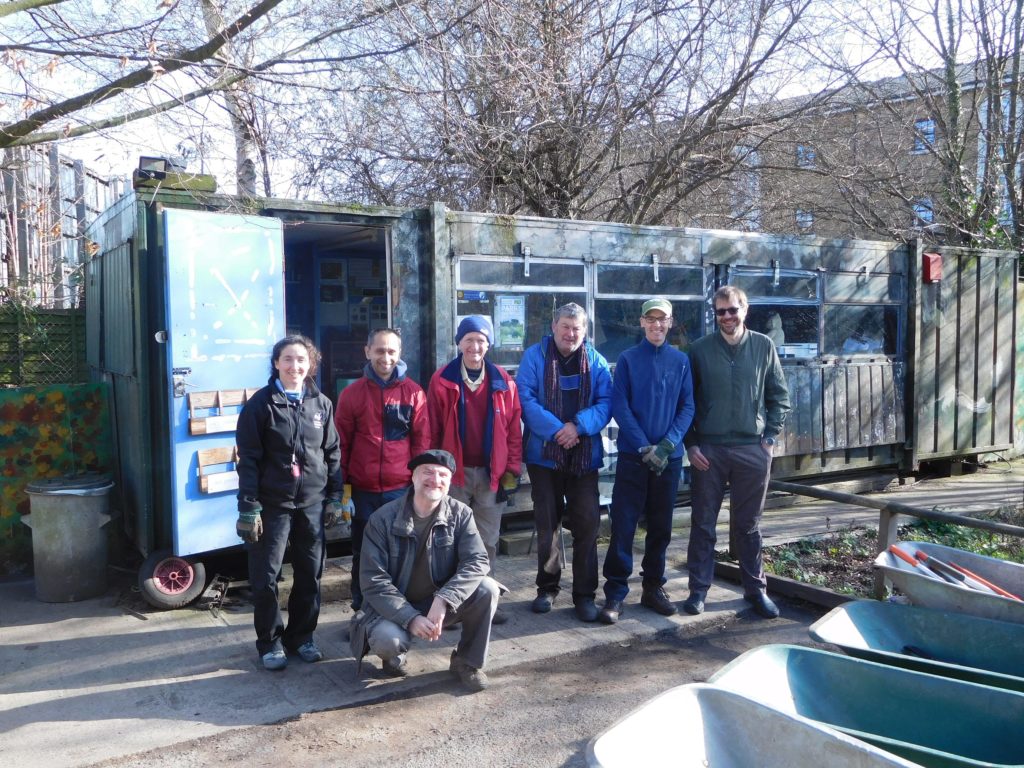
Scruffy but we loved it – the leaky old portakabin hut doubling as kitchen, volunteer room, office, and museum